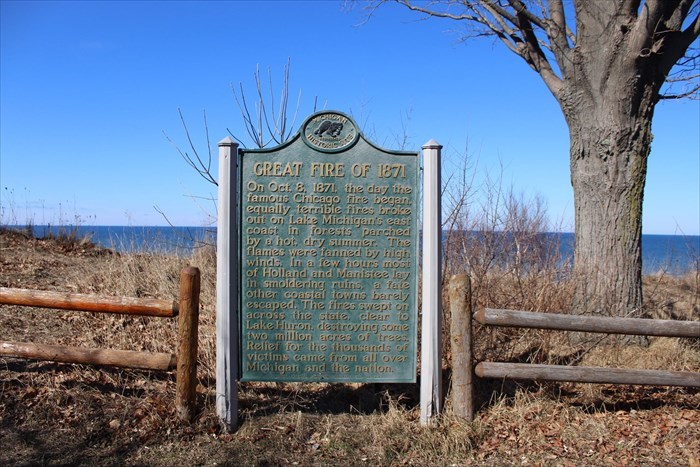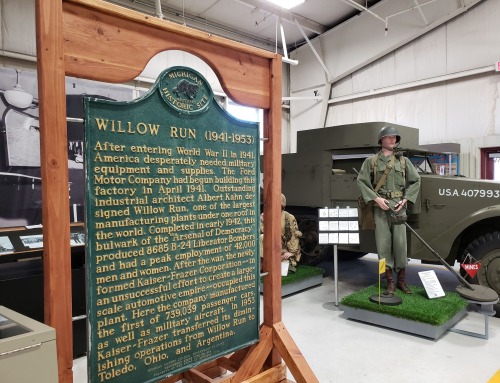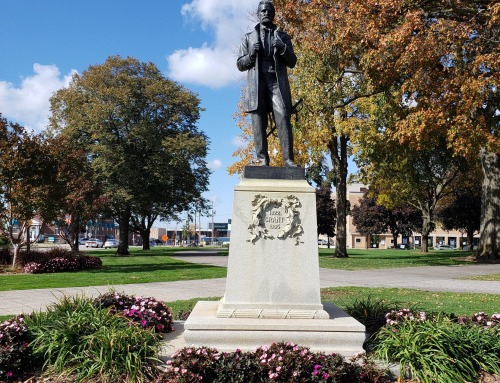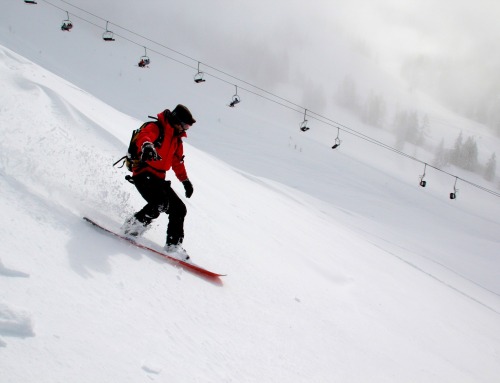For most historians, October 8, 1871, will stick out as the day of the Great Chicago Fire. The blaze in the Windy City killed approximately 300 people, destroyed 3.3 square miles of the city, and left over 100,000 residents homeless. Many people believe the Michigan connection to the Chicago fire is limited to the fact that lumber from Michigan helped rebuild the city. However, the Chicago fire was not the only blaze that destroyed lives in the Midwest that day. In Michigan, fires broke out in Holland, Manistee, Alpena, Glenn Haven and 40 other small settlements. The “Thumb” area of the state was hit especially hard, where 90 % of homes were destroyed.
How did these fires happen? Like the cause of the Great Chicago Fire, the exact reasons are still unknown, though there are theories. It is a certainty that the conditions of the landscape and the weather contributed to the spread of the fires.
In the mid-1830s, logging began in Michigan as a significant industry. Especially harvested was the Eastern White Pine. By 1854, sixteen sawmills were in operation and produced over 13,000 board feet of lumber. This was great for the economy, but it also left behind branches, bark and unused wood. This leftover brush was referred to as slash, and was perfect tinder for the October blaze. Once lumberjacks had cleared the land, the lumber companies then sold the land to farmers, who finished clearing it by blowing up the tree stumps. The farmers began growing sugar beets, corn and navy beans. Combine that dry wood with a long and hot summer, including drought and high winds and it is no surprise that the fires spread far and wide. All season long, farmers watched their crops wither in the dry heat, and many worried about a lean winter because of the cruel summer.
Around midnight, on October 8, 1871 the primary fire started. In A History of Sanilac County, a civilian of Michigan describes the fire as “A sky of flame, of smoke of heavenful, the earth a mass of burning coals, the mighty trees, all works of man between and living things trembling as a child before a demon in the gale. To those who have seen, the picture needs no painting.”
As the fires spread, dry air was drawn in from inland instead of moist air from over the lakes. This caused a wind that carried chips and fragments to other areas, which in turn, started new fires. The big brush piles that had been left by the lumberjacks added to the fuel. The pine needles and stems that had accumulated on the ground contained resin, which caused the fires to burn very hot. The fires reached such an intensity that it caused hurricane-like winds and the heat made treetops explode into flames.
Small communities all around the northern Midwest region were hit. Even as far away as Wisconsin, the Great Peshtigo Fire easily leapt the border and destroyed several towns in the Upper Peninsula of Michigan, especially Menomonee County. Meanwhile, in Holland, by late afternoon of October 8, winds were at hurricane strength, specifically the southern part of town. The western edge of the city caught fire by the time night fell, and hope of saving the existing town was lost. Holland sacrificed 76 businesses, 243 homes, 5 churches, 3 hotels, 5 warehouses, and 45 other buildings.
East of Holland, embers and dense smoke from other fires started in Manistee, through Grayling and Big Rapids, then through Isabelle, Midland and Bay Counties, but halted in Gratiot County. In this area, the lumbermen had moved on. Unfortunately, burning embers ignited small piles of slashing along the Cass River, then traveled up the Thumb. Residents here jumped into wells, praying this would keep them safe. In Port Huron, at least fifty people died. Fires also broke out in Sanilac, Huron and Tuscola Counties.
In Lake Huron towns like White Rock and Rock Falls, civilians raced to the water in the hopes of survival. In Rock Falls a small boat carried nine children to safety but they drifted for three days across Lake Huron toward Canada. All survived the ordeal except a three-year-old boy.
The sky near Lake Huron was so smoky that would-be rescuers were not able to navigate the waters that evening. This made it difficult for some civilians to be saved. However, ships like the Fesenden, Huron, and Marine City were able to transport burn victims to hospitals and deliver provisions and clothing to the needy. There were many relief stations and contributions came in from all over the nation. In the 1870s, it is worth remembering that there were no official emergency relief teams in the United States.
At the time, news of the fire was inaccurate, mostly passing by word of mouth. This caused tragedy in itself, as some people encountered the fire on Sunday morning, but many victims on outlying farms didn’t know about the fire until they saw it heading toward them. The fire also destroyed telegraph lines that may have warned others.
By October 19, most of the flames were out, but smaller fires burned through until November.
There are many theories as to how the fires started. Many believe it was all caused by the same winds that fanned the Chicago fire. Some believe that lighting or a meteor shower may have started the initial blaze. There is also a theory of a comet hitting the earth. Like the Great Chicago Fire, we may never know the exact spark that started it all. However, it is undeniable that the fire changed the lives of thousands of people.
More than 3,900 square miles of Michigan were destroyed, including thousands of buildings, horses, barns, stores and mills. Hundreds of families were left homeless. Exact human death numbers are unknown. Families reporting members missing put the estimate at less than 500, but there were also hundreds to thousands of lumberjacks and salesmen, along with settlers in remote areas that may not have been accounted for. People were not only killed by the fires but also suffered blindness, hysteria, exhaustion, a lack of food and water, and third degree burns.
Many small towns that were just getting started perished in the blaze and were never rebuilt, such as Center Harbor and Forest Bay in Huron County, New River on the New River Creek, and Elm Creek in Deerfield Township.
Not ten years later, as the lumber era was coming to an end, the Thumb was once again hit hard by fires in August in 1881, but that story will have to wait for a future article.
I must admit that despite living in Michigan my entire life and taking a Michigan History course in college, I had never heard of the Michigan fires of 1871. Chicago receives all the notoriety in the history books with a great loss in a small area, yet Michigan had a great loss over a much larger area. The lumber of Michigan not only rebuilt Chicago, it rebuilt our own great state!







Leave A Comment
You must be logged in to post a comment.